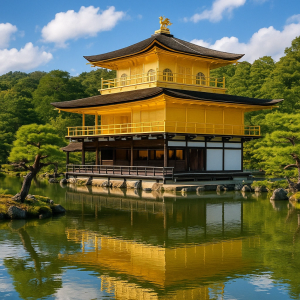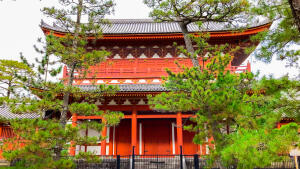Ryoanji is easy to reach from Kyoto Station by JR bus. The 30-minute ride costs 230 yen and is covered by several rail passes, including the Japan Rail Pass and Kyoto’s one-day bus pass. Buses run every 15 to 30 minutes. Alternatively, it’s a 5-minute bus ride or a 20-minute walk from Kinkakuji.
You can also take the Keifuku Kitano Line, which connects northwestern Kyoto with Arashiyama. Get off at Ryoanji-michi Station and walk 5 to 10 minutes to the temple.
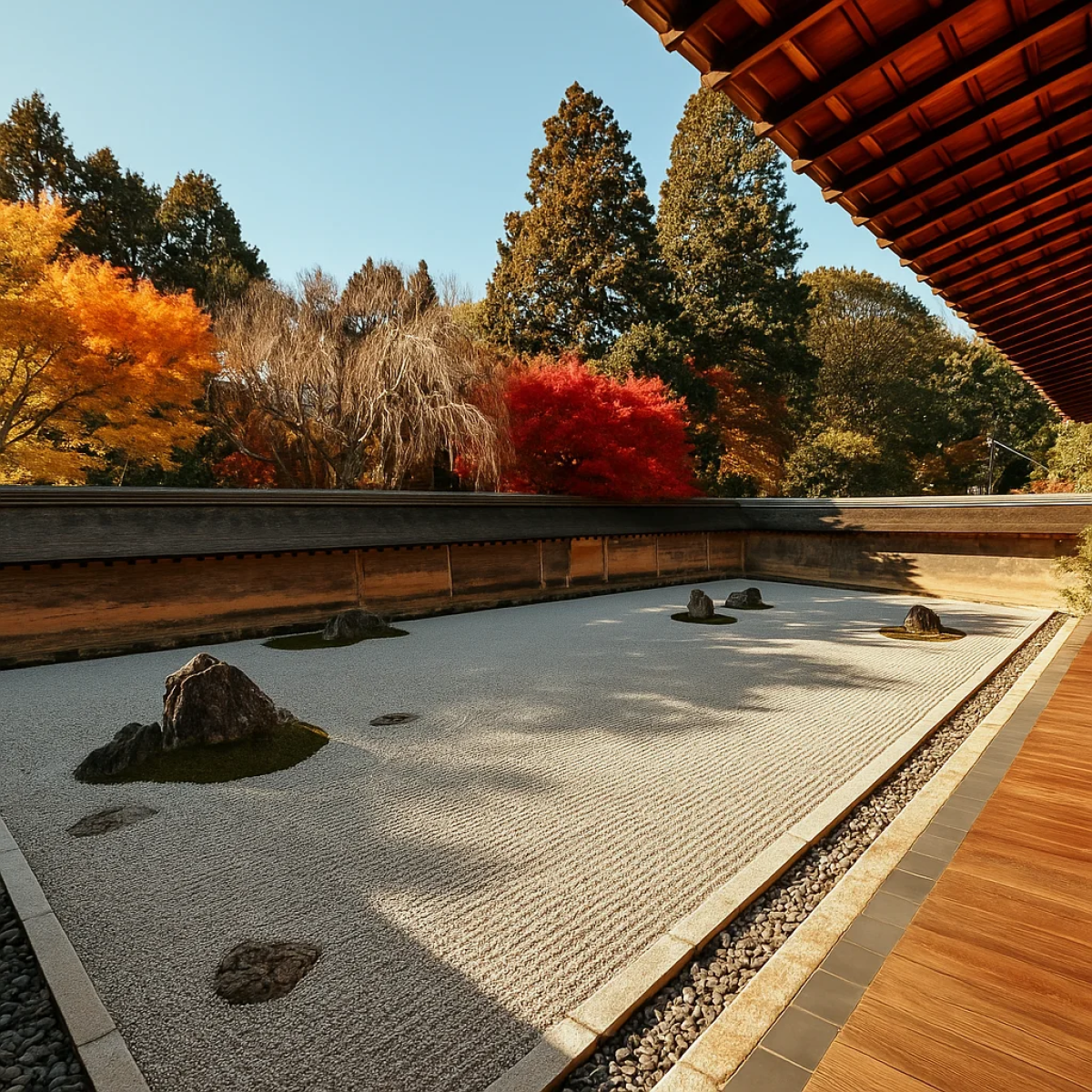
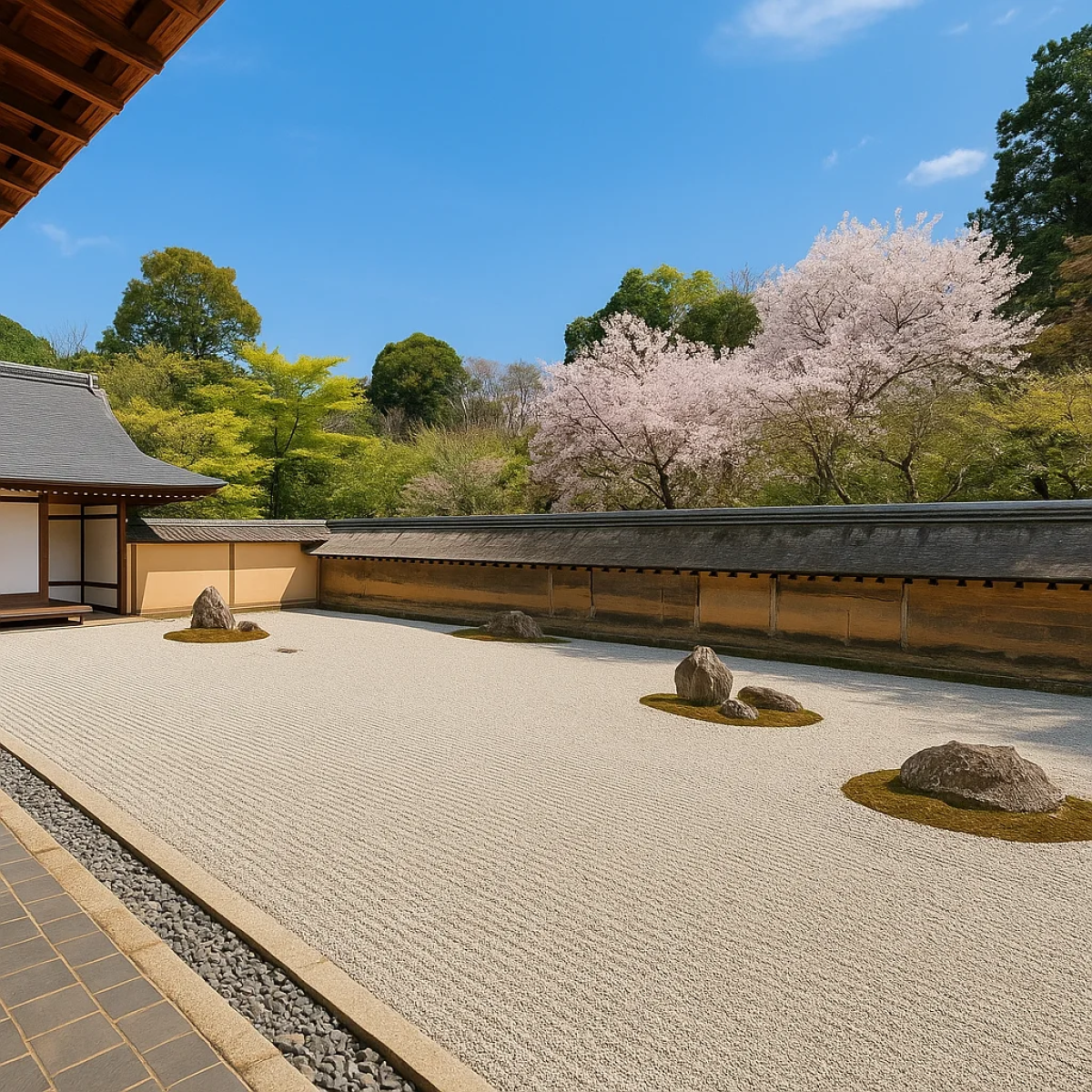

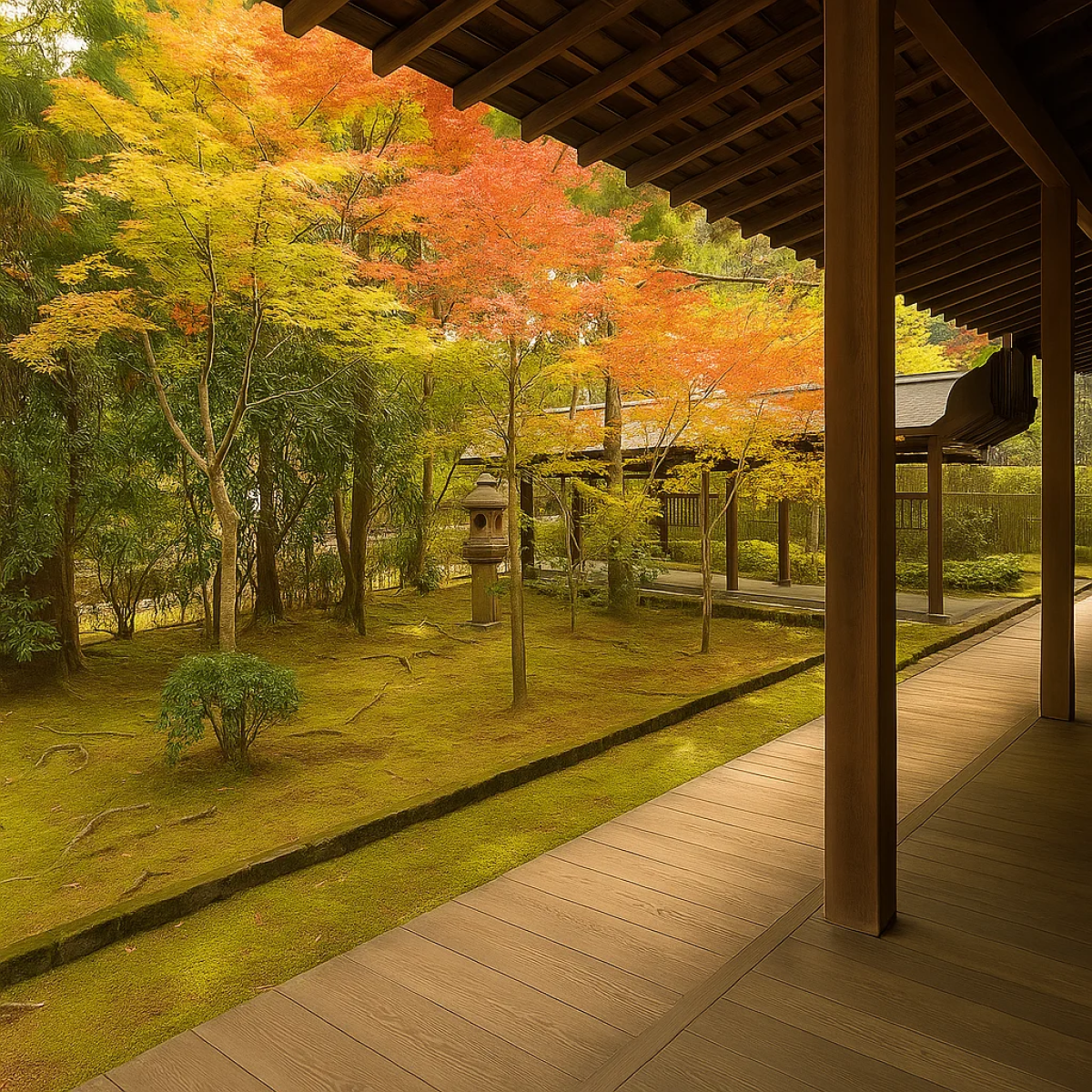

Ryoanji Temple
Ryoanji Temple (龍安寺, Ryōanji), originally an aristocrat's villa, was converted into a Zen temple in 1450 and now belongs to the Myoshinji school of the Rinzai sect. It is best known for its iconic rock garden, widely considered Japan's most famous. The minimalist garden features 15 carefully placed rocks set in white gravel, surrounded by low earthen walls. Despite its simplicity, the garden's true meaning remains a mystery. Some interpretations suggest it represents islands in a sea, a tiger crossing a pond, or even abstract concepts like infinity and the impermanence of life, inviting personal reflection and meditation.
Beyond the rock garden, Ryoanji offers much to explore. The temple's Hojo (main hall) displays fusuma sliding door paintings and overlooks smaller sub-gardens. The temple grounds include Kyoyochi Pond, originally part of the villa, which is surrounded by lush trees, a small shrine, and tranquil walking paths that change with the seasons. Visitors can also dine at the on-site restaurant, which specializes in yudofu—Kyoto’s famous boiled tofu—served in a peaceful, traditional atmosphere that enhances the Zen experience.
Hours and Fees
- Opening hours
-
8:00 to 17:00 (March to November)
8:30 to 16:30 (December to February)
- Closed
-
No closing days
- Entrance fee
-
500 yen
Getting there
Resources
Nearby
Reviews
-
5/5 - Excellent
Visiting Ryoanji Temple in Kyoto was a serene and contemplative experience. The temple's renowned Zen rock garden, featuring fifteen carefully placed stones amidst meticulously raked white gravel, invites deep reflection. The intentional ambiguity of the arrangement allows for personal interpretation, making each visit unique.
Beyond the rock garden, the temple's expansive grounds offer lush landscapes and a tranquil pond, providing a peaceful retreat from the city's bustle. Combining a visit to Ryoanji with nearby attractions like the Golden Pavilion enhances the cultural experience. Overall, Ryoanji Temple is a must-see destination in Kyoto, offering both aesthetic beauty and a profound sense of peace.3 months ago — by Daan

